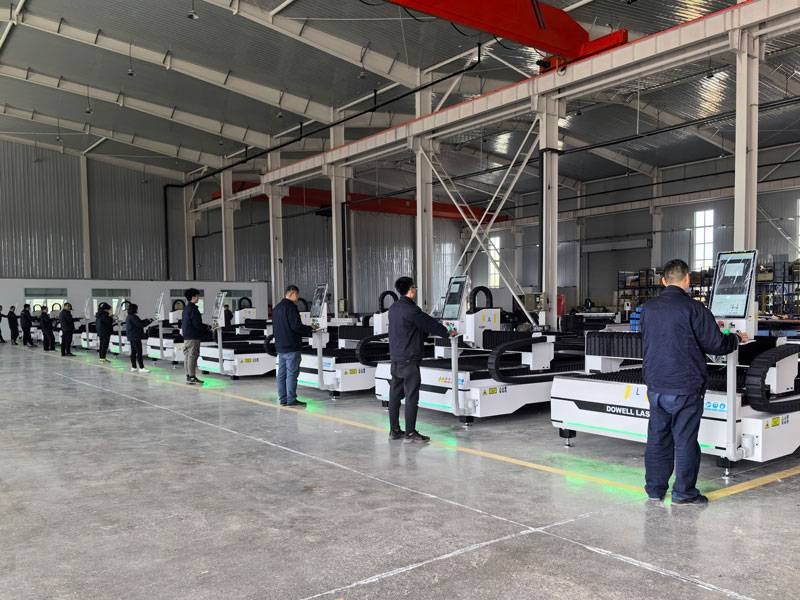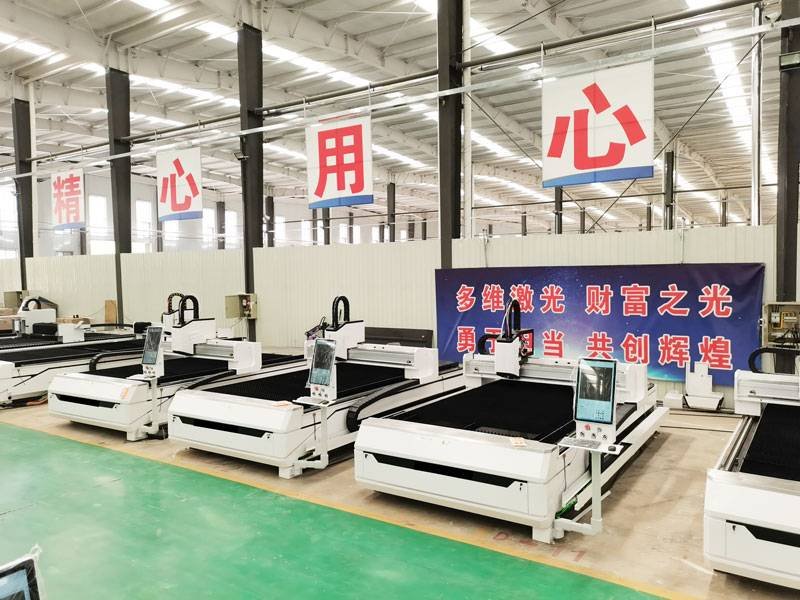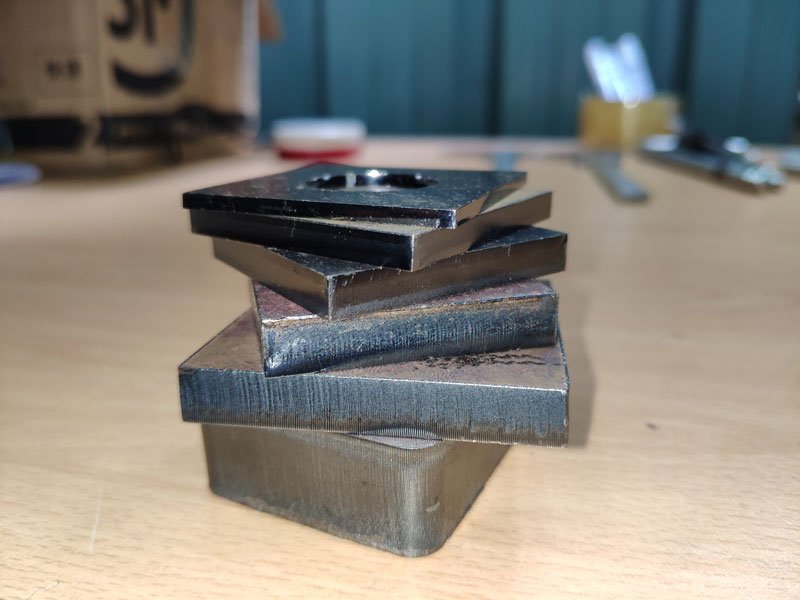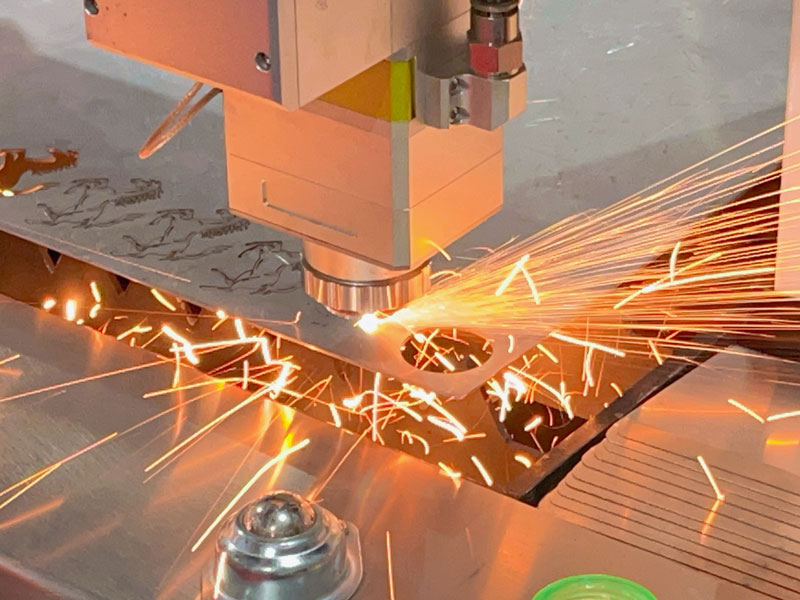In the world of fabrication and fabrication, we are revolutionizing the way we cut tough materials with precision and precision. The beauty of a fiber laser cutting machine lies not only in its ability to effortlessly cut a variety of materials, but also in its unparalleled precision and speed. Let’s lift the mystery behind fiber laser cutting machines and reveal their unparalleled capabilities and transformative impact on modern industry.

What is Fiber Laser Cutting Machines?
Fiber laser cutting machine is an industrial tool for cutting metal sheets. It uses the energy precisely generated by the fiber laser beam to efficiently cut the sheet. Unlike traditional cutting methods such as sawing or shearing, fiber laser metal cutting machines offer a non-contact cutting process that results in cleaner cuts and minimizes material waste.
Fiber laser generators are responsible for generating a laser beam that is then focused and aimed at the material to be cut. The material is then heated to its melting point by a laser beam, or vaporized, creating narrow cuts that separate the desired shape from the rest of the material.
Speed and efficiency are the reasons for the popularity of fiber laser cutting machines. Ideal for cutting thick materials at high speeds for any large-scale production operation. Additionally, these machines offer excellent precision and can perform complex cuts with minimal errors.
How Fiber Laser Cutting Machines Work
The main component of the fiber laser cutting machine is the fiber laser generator which creates an intense beam of light by passing an electric current through a series of optical fibers doped with a rare earth element such as erbium or ytterbium and these elements amplify the light within the fiber resulting in a highly focused and powerful laser beam.
After that, this resultant laser beam gets projected on to the material under cut using a set of mirrors and lenses. A concise fixed-beam has a very small spot size, usually less than 0.1 mm across, enabling accurate cuts.
When an area on a material surface is hit with a focused laser beam, it quickly heats up to its melting or vaporization point. To eliminate melted or vaporized material thus ensuring clean and precise cutting, auxiliary gases like oxygen or nitrogen are commonly used in such situations.
Types of Fiber Laser Cutting Machines
There are several different types of cnc fiber laser cutting machine available in the market, each designed for specific applications and cutting requirements. Some common types include:
1. Sheet Metal Fiber Laser Cutter: These machines are specifically designed for cutting sheet metal materials, such as stainless steel, aluminum, and mild steel. They offer high-speed cutting capabilities and can handle various thicknesses of sheet metal.
2. Tube Fiber Laser Cutting Machines: As the name suggests, these machines are designed for cutting tubes and pipes. They feature specialized chucking systems that securely hold the tubes in place during the cutting process.
3. 3D Fiber Laser Cutting Machines: These machines are capable of cutting three-dimensional shapes and contours with precision. They are often used in industries such as automotive manufacturing and aerospace engineering.

How much fiber laser cutting machine price
The costs of fiber laser cutting machines vary significantly due to their size, wattage, manufacturer and attributes. A typical small desktop fiber laser cutter machine may retail at about $20,000 while a large industrial-grade machine can cost between $50,000 and over $500,000. To get an exact quote for your particular needs it is advisable to make direct contact with the distributors or manufacturers.
What Materials Can A Fiber Laser Cut?
A fiber laser cutting machine can cut through a wide range of materials, including:
- Metals: Stainless steel, aluminum, carbon steel, copper, brass
- Plastics: Acrylic, polycarbonate
- Composites: Fiberglass
- Wood
- Leather
- Fabric
The capability to cut through an assortment of materials renders laser steel cutting machines highly versatile and applicable to a variety of industries, from signage production to automotive manufacturing.
Advantages And Disadvantages Of Fiber Laser Cutting
Advantages of fiber cutting laser machine:
1. Higher cutting speeds: Fiber lasers can cut materials at significantly higher speeds compared to other cutting technologies, increasing productivity.
2. Greater precision: Fiber lasers can achieve higher levels of precision in cutting complex shapes and patterns, resulting in more accurate finished products.
3. Narrower kerf width: Fiber lasers produce a narrower kerf (cutting width), leading to less material wastage and higher cutting efficiency.
4. Versatility: Fiber lasers are capable of cutting a wide range of materials, including metals, plastics, and composites, making them suitable for various industries.
5. Lower maintenance requirements: Fiber laser metal cutting machines typically have lower maintenance needs and longer service life compared to other cutting methods.
6. Energy efficiency: Fiber lasers consume less energy compared to other cutting technologies, making them more environmentally friendly and cost-effective.

Disadvantages of fiber cutting laser machine:
1. Initial cost: Fiber laser metal cutting machine can be more expensive to purchase compared to other cutting technologies, which may deter some small businesses from investing in them.
2. Limited thickness capacity: While fiber lasers excel at cutting thin to medium-thickness materials, they may not be as suitable for cutting very thick materials.
3. Requires skilled operators: Operating a fiber metal laser cutting machine requires specialized training and expertise, which can increase labor costs for businesses.
4. Reflective materials: Fiber lasers may struggle to cut highly reflective materials like copper or brass, requiring additional measures to be taken to ensure successful cutting.
5. Maintenance complexity: While fiber lasers have lower maintenance requirements overall, the components inside the machine can be complex and expensive to repair or replace if they break down.
Advantages of fiber metal laser cutting machine, such as higher cutting speeds, precision, and versatility, often outweigh the disadvantages for many manufacturing applications.
How choose best fiber laser cutting machine
Choosing the best fiber laser cutting machine can be a crucial decision for your business. Here are some key factors to consider:
Power and Performance:
Establish the amount of work your cutting machine should be able to handle. Machines with more power can cut thicker materials at a higher speed.
Cutting Area:
Take into account the size of the bed and ensure that it is sufficient to be used for your materials.
Precision and Accuracy:
You must get a machine with high precision in cutting which will affect the quality of finished products.
Operating Software:
Look out for a machine with user-friendly software, which would ease its operation and programming functions.
Maintenance and Support:
Check if technical support by manufacturers or maintenance service from them are readily available for trouble-free running of the equipment.
Price and Budget:
Find out how much money you have in comparison with other machines so that you purchase one that will give you value for your investment.
Brand Reputation:
Put into consideration a brand’s reputation when choosing among reliable brands known to manufacture superior laser cutting machines.
By putting these factors into careful thought, you can select one among the best fiber laser cutters that suit your business needs while ensuring efficient attainment of your cutting goals.

Differences between co2 and fiber laser cutters
The carbon dioxide and fiber lasers are utilized in the process of material cutting. Although they have some differences based on their technology, performance, and application areas.
Laser Source:
Gas mixture (carbon dioxide, nitrogen, hydrogen, and helium) is the laser source used by CO2 laser cutters. Such lasers can emit a wave length of about 10.6 micrometers.
The source of fiber laser cutters is a solid-state laser, which usually is a doped fiber optic cable with such elements as ytterbium, neodymium or erbium. The wavelength emitted by these lasers stands at around 1.06 micrometers.
Power Efficiency:
Unlike CO2 lasers, fiber lasers have higher power efficiency that means they need lower energy for operation but give greater output power in return. This leads to faster cutting speeds and lower operating costs for fiber lasers.
Cutting Speed and Accuracy:
If you compare them to CO2 lasers when thin or medium thickness materials are being cut, then generally speaking fiber lasers tend to be more precise and quicker as well. These possess much higher power densities and beam quality thus enabling them to attain higher cutting speeds with finer details.
Material Compatibility:
On the other hand CO2 are better at cutting non-metal materials like wood, plastics ceramics and fabrics but can also cut metals although not as efficient as fiber lasers.
Fiber lasers on the other hand have been specifically designed for use in metal cutting; they cut through stainless steel, aluminum,copper brass among others very well.They provide high quality edges with good performance on metal applications.

Maintenance and Operating Costs:
As compared to fiber Lasers Co2 have high maintenance requirements coupled with high operating costs so that it’s less expensive maintaining them than buying new ones each time they wear out since the life span of such fibers is longer before wearing out.
CO2 Lasers require frequent replacement unlike Fiber Lasers which last longer with fewer maintenance needs hence reducing their running costs over time
Initial Investment:
Compared to CO2 laser cutters Fiber Laser Cutters may require more initial capital outlay. However, fiber lasers tend to be more efficient and better performing thus giving them cost savings in the long term especially for high volume metal cutting applications.
In conclusion, each type of laser cutter has its distinct advantages and applications based on its technology and performance characteristics. The choice between CO2 and fiber laser cutters will depend on specific materials to be cut, cutting requirements, budget, and lifetime operational considerations.
